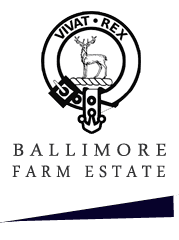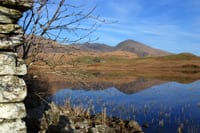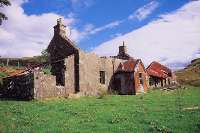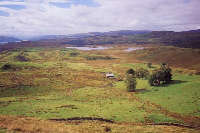History of Ballimore and the surrounding area
The MacCorquodale Clan chiefs were the Barons of Phantelane and ruled from their island castle on Loch Tromlee. The ruins of the castle remain on the island, walking distance from Ballimore. As such, the area is steeped in Scottish history dating back to the 11th Century.
Archaeological interest at Ballimore:
- A limekiln – It was built into the hillside, very well preserved. Lime became popular after the ‘agriculture revolution’ in the mid 18th century and was used commonly as manure.
- A small farmstead – It was known as Ballibeg (small settlement) and comprises of the remains of a longhouse, barn and an enclosure.
- The head-dyke – This type of stonewall was introduced in the Medieval period century to separate rough grazing land from land that could be cultivated. Animals were turned out on the hill pasture from May to October and these dykes were used to keep them away from the crops until after harvest.
- Old Ballimore – There is 17th/18th century laird’s house, three stories high with a west gable that is almost intact to show that it measured 12.5m by 6.5m within walls 0.75m in thickness. A fireplace is visible at ground floor level in the standing gable and the level of the first and attic floors can also be seen.





